When papier-mache is mentioned as an art material, memories may spring to mind of childhood crafts and messy hands. However, it has been used throughout history as an adaptable and fully versatile medium, which can be used in anything from three dimensional artworks to pieces of fine furniture. Some owners may not realise that the light nature of their sculpture or chair is due to this material, as once it is solid and finished with a smooth surface, it can blend in perfectly with a traditional or modern interior.
Papier-mache can remain durable for hundreds of years if it is well constructed and kept in a safe environment. This material is extremely prone to mould growth and accidental damage, but these issues can be avoided with vigilant care and inspections.
This article will cover the details of papier-mache as an important art historical medium, as well as advice on the care and preservation of such pieces and their restoration results.
 Above: a pair of Japanese papier mache incense boxes (inuhariko) shaped as dogs, 1840
Above: a pair of Japanese papier mache incense boxes (inuhariko) shaped as dogs, 1840
What is papier-mache?
Papier-mache translates to ‘chewed’ or ‘mashed’ paper. The ingredients may have variations, but the key materials are strips of paper or pulp, mixed with an adhesive such as glue, wallpaper paste, or starch. Traditional recipes include the use of water and flour. In some cases they may also have fragments of textiles to add strength.
Papier-mache is often moulded around an object to keep its shape as it dries. Whilst some of these may be taken away, structural supports such as chicken wire will remain inside.
To prevent future mould growth and pests, some artists may have included preservatives. This may be salt, clove oil or garlic, with extra herbs and spices to prevent any unpleasant smell emitting from the finished sculpture.
 Above: a detail from a German cartapesta (papier-mache) depicting the adoration of the magi, 1470-1480
Above: a detail from a German cartapesta (papier-mache) depicting the adoration of the magi, 1470-1480
Where can you find papier-mache in antiques?
Papier-mache has been used in art and furniture for hundreds of years. It can be dated back to the Han Dynasty in China around 200 AD and was used for not only decorative purposes but to also craft helmets. Across the rest of the Asian continent it can also be found on shields and armour.
Antique toys and dolls may feature papier-mache elements such as heads, hands and legs. Dolls made of papier-mache can be dated back to the 16th century in Europe with many other examples across the centuries.
One of the most popular uses for papier-mache in antiques is in decorative frames. The light yet durable nature of the material made it an easy option when hanging artworks, especially if they are very large. From the 18th century, the gilding of papier-mache created a low cost alternative to carved wood or cast metals, it is found on frames dated from 1725 onwards and within interior decoration, such as three dimensional flourishes on ceilings, known as ‘paper stucco’.
 Above: antique papier mache gondola chair (left) and side chair (right) with details of their decoration and lacquer surface, 19th century
Above: antique papier mache gondola chair (left) and side chair (right) with details of their decoration and lacquer surface, 19th century
In the 19th century, the production processes from the industrial revolution allowed papier-mache to be manufactured into precisely pressed shapes. In the Victorian period you may find furniture and decorative accessories, such as trays and boxes. In Russia this was especially popular for household decorations, with the Tiffany catalogue from 1893 listing a large assortment of pieces to purchase.
Papier-mache furniture was produced throughout the 19th century, sometimes with a wooden or metal frame to provide extra strength. These often have a high shine due to being heavily lacquered. An extremely light antique chair, table, or bed frame, can usually be determined to be a papier-mache creation.
 Above: Mexican day of the dead cartoneria (papier-mache) models inspired by La Calavera Catrina
Above: Mexican day of the dead cartoneria (papier-mache) models inspired by La Calavera Catrina
The most popular location in the world for papier-mache artworks is Mexico. The technique is used in folk art, especially around cultural and religious celebrations, where it is known as ‘cartonería’. Well known pieces include the hand crafted sculptures of ‘La Calavera Catrina’ which are produced for Day of the Dead. Catrina is a well-dressed female skeleton whose origin is linked to a mural by Diego Rivera.
What is the value of papier-mache?
- In October 2020 a papier-mache sculpture by artist Franz West sold for £312,500.
- A 1968 Pinocchio animatronic sculpture from Disneyland was estimated at $10,000 – $20,000 in July 2021 following a restoration of internal parts.
- In 2019 several botanical sculptures by the Brendels came to auction, surpassing their asking prices and selling for upwards of £10,000 per set.
- An original Yayoi Kusama pumpkin sculpture from 1999 sold for £180,000 at a Japanese auction.
- A papier-mache panel by Dutch artist Jan Schoonhoven sold for over £260,000 in 2012.
Which risks face papier-mache?
Damage can occur to papier-mache artworks and furniture through environmental or accidental means. However, deterioration can also begin due to improper preparation by the original artist.
When papier-mache is created it must be allowed to dry fully before paint and varnish layers are applied. Without this, a damp environment will form inside the hollow interior and mould will proliferate until the piece begins to completely decay. Moisture may also enter due to lack of protection on the surface of the piece, or due to accidental damage forming holes, cracks, and dents, where moisture can enter.
As long as the piece is properly prepared, has a sealed surface, and is kept away from high levels of humidity or liquids, it should be durable and the rot can be avoided. If a piece has met with water, has a dent, hole, tear, or widespread cracking, or an unusual smell which may be mould, get in touch with our team as soon as possible. Check the surface of your papier-mache carefully for any areas of concern, as the sooner an issue is noticed, the lower the costs and intervention will be from our conservators.
 Above: antique papier mache mirror cases with cracked lacquer surfaces, 19th century
Above: antique papier mache mirror cases with cracked lacquer surfaces, 19th century
Pests may also infest papier mache if the piece is unsealed and gaps allow for easy access. Even small cracks and holes should be sealed to avoid an opportunity for hungry insects or mice who are looking for bedding. They could also be attracted to eat away at any organic materials such as flour and starch which have been used in the mixture. This can be treated by conservators, who will eliminate the infestation with careful methods. Do not attempt home remedies for this situation as everyday chemicals may harm the artwork.
Whilst papier-mache may have survived for hundreds of years, pieces such as furniture should be kept from use to prevent accidental damage or everyday wear, as this may begin to weaken the structure. It is recommended that papier-mache furniture is used only as decoration.
 Above: an antique papier-mache book cover with signs of deterioration and scratches to the lacquer surface, 1802-03
Above: an antique papier-mache book cover with signs of deterioration and scratches to the lacquer surface, 1802-03
Keep papier-mache furniture and artwork away from pets, as chewing and scratching may damage them more drastically than a traditional material. This may create the need for some parts to be entirely reconstructed and reapplied by a conservator to maintain the preservation, visual impact and value of the piece.
As papier-mache often has a metal or chicken wire base, this can deteriorate with rust and may need to be carefully replaced by a conservator. You may see rusty brown marks coming through as this process occurs, or a weakening of the surface as the wire disintegrates.
The environment for papier-mache is best kept at even levels to avoid any exposed paper from continuously moving due to moisture absorption and loss. Dry air will create a brittle surface, whilst moisture will lead to foxing and mould. A temperature of around 20 degrees celsius and a humidity of 50% is ideal. Areas of strong sunlight should also be avoided to avoid UV ray discolouration and temperature fluctuations.
How do I clean papier-mache?
Papier-mache antiques should be assessed before they are cleaned, if there is any sign of damage or cracking this should only be attempted by a professional conservator. If in good condition, the piece can be lightly wiped with a soft dry cloth to avoid the buildup of dust and contamination.
Ensure that no overlying areas of decoration, such as gold leaf, are rubbed during this process. A soft cloth must be used to avoid any abrasions to the lacquer or varnish layer as this is very sensitive to scratches. Take off any watches, rings, or bracelets which may accidentally rub against the surface as it is dusted.
 Above: papier-mache classical helmet and costume details from the 18th century and a papier-mache mask from an Indian museum
Above: papier-mache classical helmet and costume details from the 18th century and a papier-mache mask from an Indian museum
Can papier-mache be restored?
Yes, papier-mache can be restored by our conservators who are trained in this area. Their experience with this material means that they know the risks which such an artwork may have faced and the elements which may be encountered during the conservation process. At Fine Art Restoration Company our team has worked on papier-mache pieces, including large sculptures.
 Above: a papier-mache tiger which was restored by our team, pictured before restoration (left) and after restoration (right)
Above: a papier-mache tiger which was restored by our team, pictured before restoration (left) and after restoration (right)
A notable project was that of a papier-mache tiger which was a childhood favourite of our client, who wanted to ensure he survived for future generations. The tiger has lost a fight with an enthusiastic puppy, who had chewed away at the nose. This had left the sculpture vulnerable as the interior was now able to absorb moisture from the air. The original paintwork surrounding the broken area had also been weakened.
Our team set about to expertly recreate the missing nose, using an old photograph of the tiger to make sure it was as accurate as possible. The result was not only seamless, but protected the papier-mache from any environmental harm and instability which could have gone on to compel complete deterioration and loss.
 Above: a papier-mache bull which was cleaned and restored by our team, pictured before restoration (left) and after restoration (right)
Above: a papier-mache bull which was cleaned and restored by our team, pictured before restoration (left) and after restoration (right)
Our team is able to restore any manner of papier-mache artworks and items with conservation-appropriate techniques. This includes the use of specialist solvents which are tailored to the needs of the piece, re-varnishing scratched and broken lacquer, retouching lost areas of paint and gilding, pest control, remoulding lost elements, and reapplying broken features with safe adhesives which will not adversely affect the materials. Chicken wire and metal frames can be replaced, stabilised, or strengthened where appropriate to do so. Our aim is for the overall longevity of the piece, as well as allowing it to maintain its historical integrity and visual impact.
Contact our team for further information
If you have any papier-mache artworks or furniture which you are concerned about, our team is happy to advise and assist you in ensuring it’s preservation.
You can contact us via email [email protected] or by calling 0207 112 7576
You may also be interested in:

 Above: a pair of Japanese papier mache incense boxes (inuhariko) shaped as dogs, 1840
Above: a pair of Japanese papier mache incense boxes (inuhariko) shaped as dogs, 1840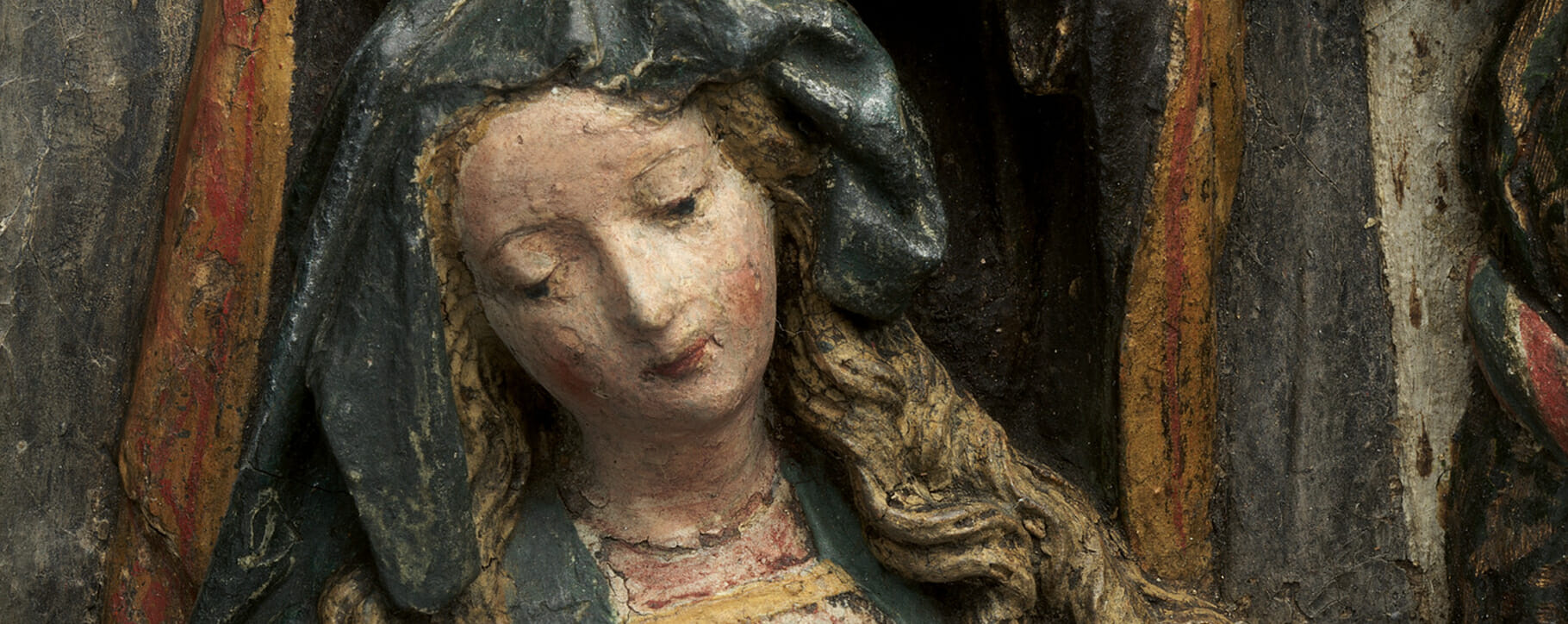 Above: a detail from a German cartapesta (papier-mache) depicting the adoration of the magi, 1470-1480
Above: a detail from a German cartapesta (papier-mache) depicting the adoration of the magi, 1470-1480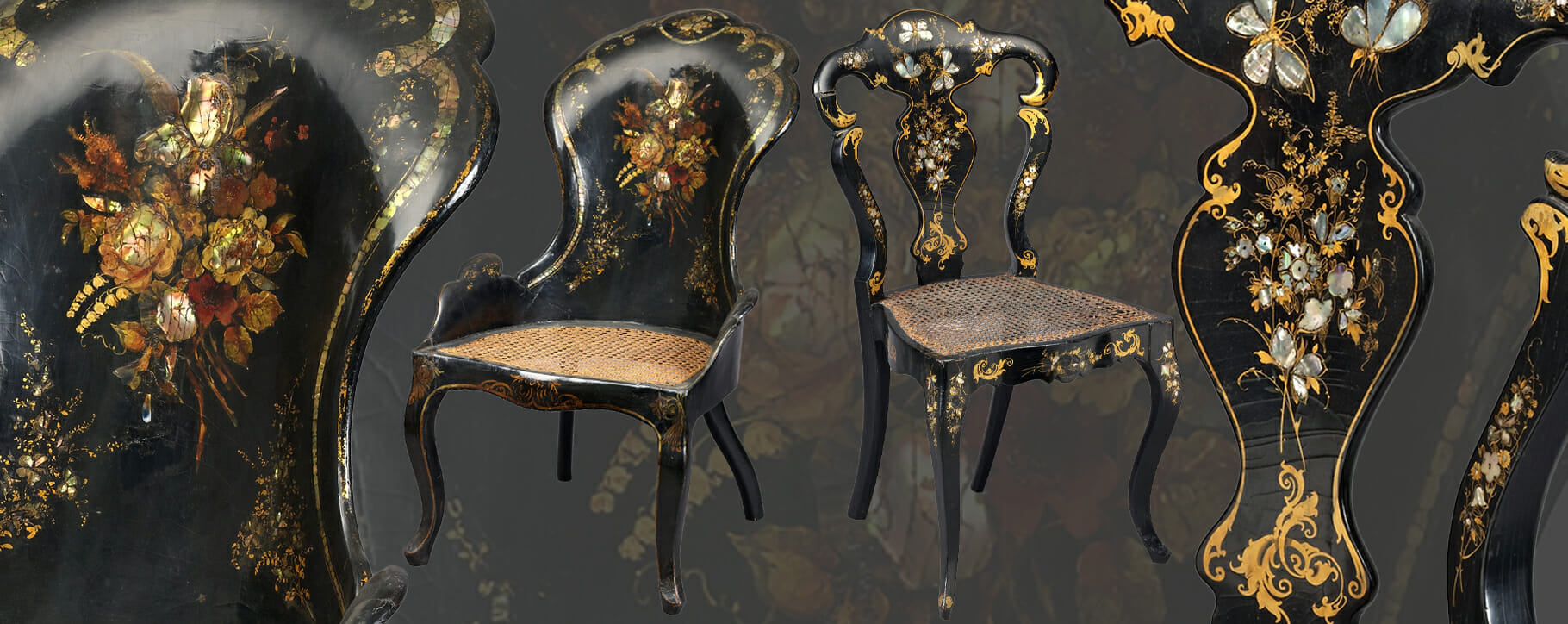 Above: antique papier mache gondola chair (left) and side chair (right) with details of their decoration and lacquer surface, 19th century
Above: antique papier mache gondola chair (left) and side chair (right) with details of their decoration and lacquer surface, 19th century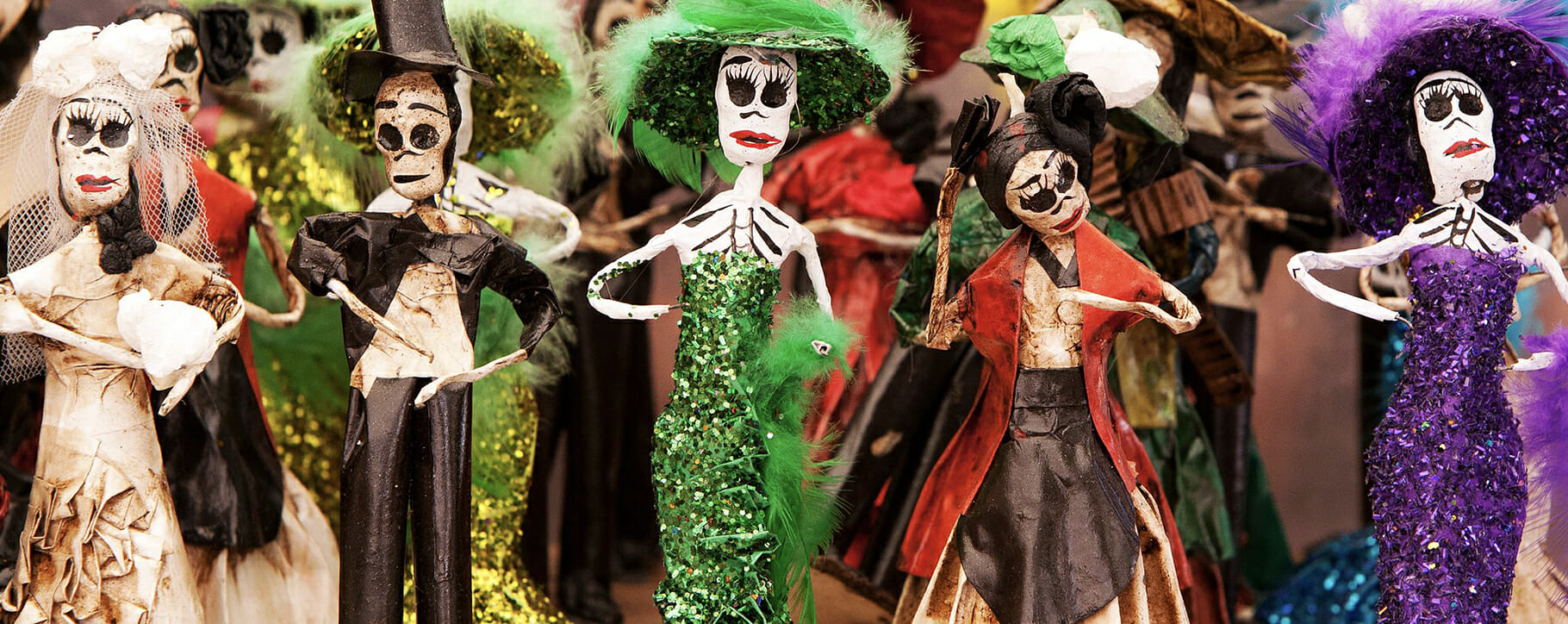 Above: Mexican day of the dead cartoneria (papier-mache) models inspired by La Calavera Catrina
Above: Mexican day of the dead cartoneria (papier-mache) models inspired by La Calavera Catrina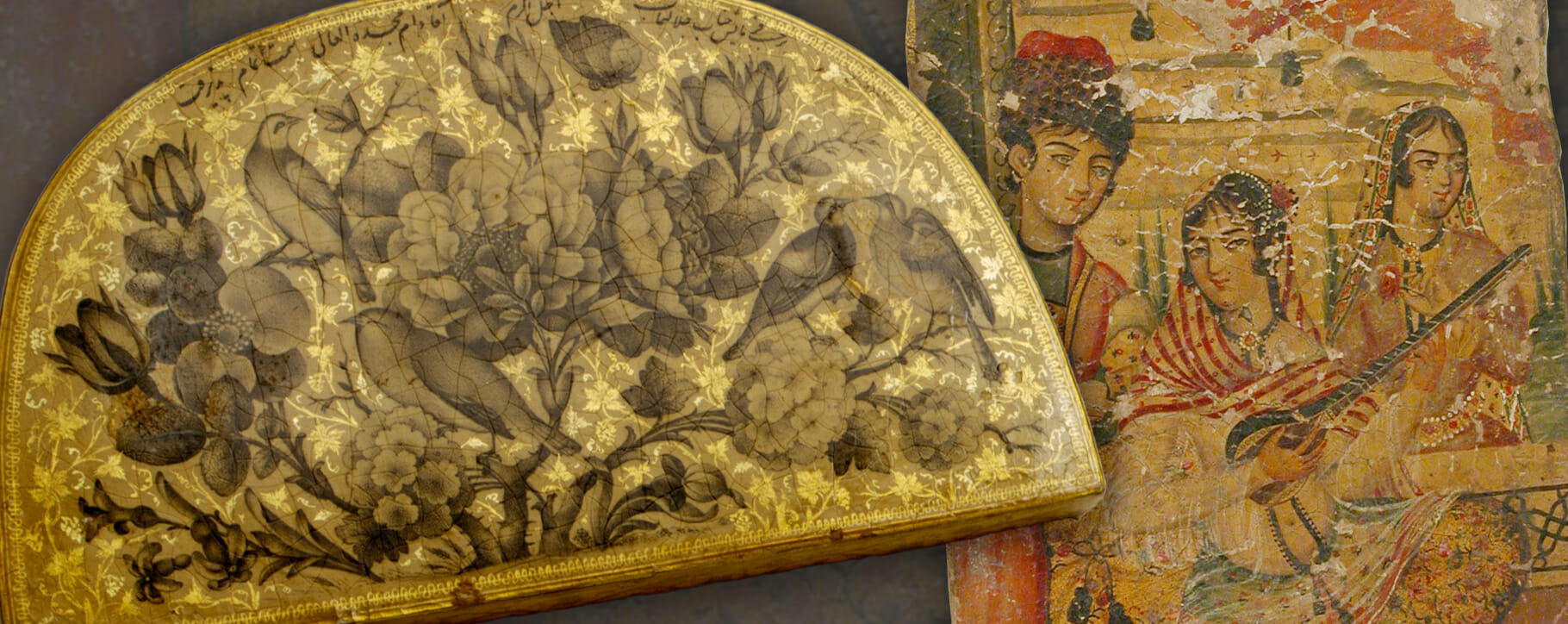 Above: antique papier mache mirror cases with cracked lacquer surfaces, 19th century
Above: antique papier mache mirror cases with cracked lacquer surfaces, 19th century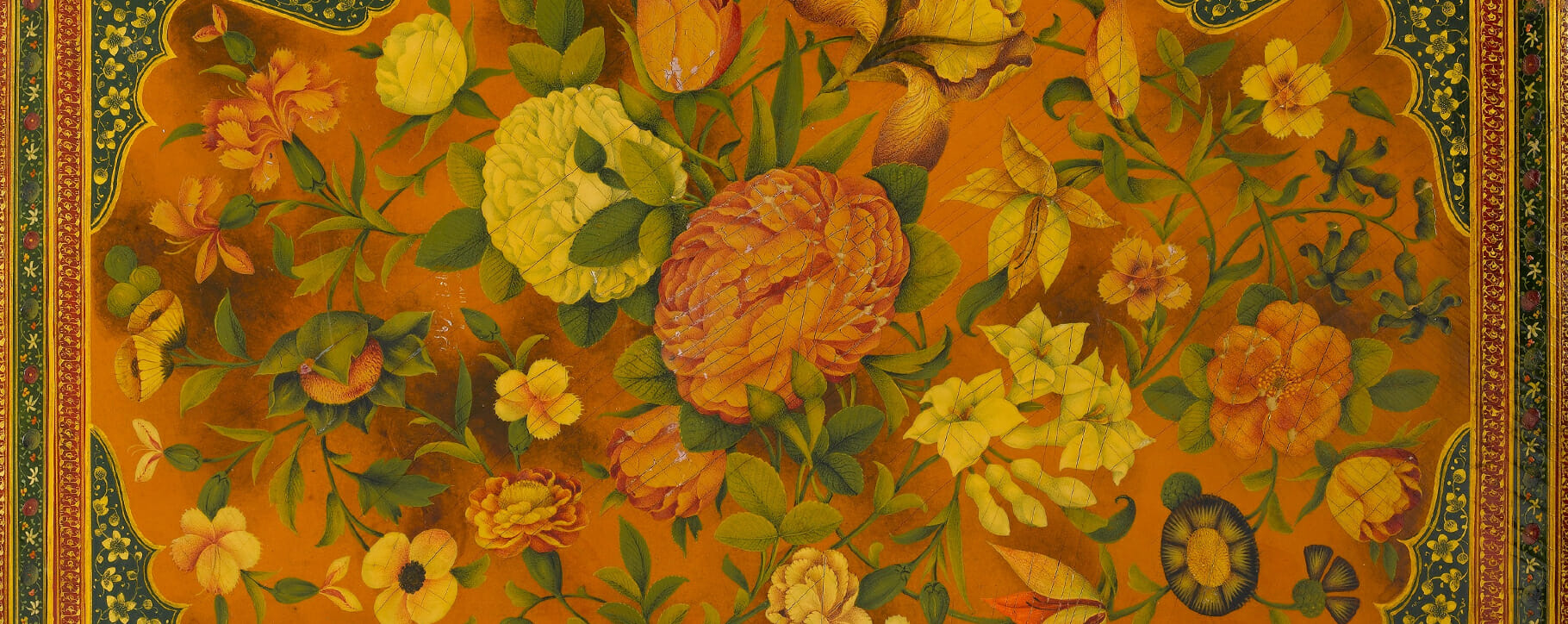 Above: an antique papier-mache book cover with signs of deterioration and scratches to the lacquer surface, 1802-03
Above: an antique papier-mache book cover with signs of deterioration and scratches to the lacquer surface, 1802-03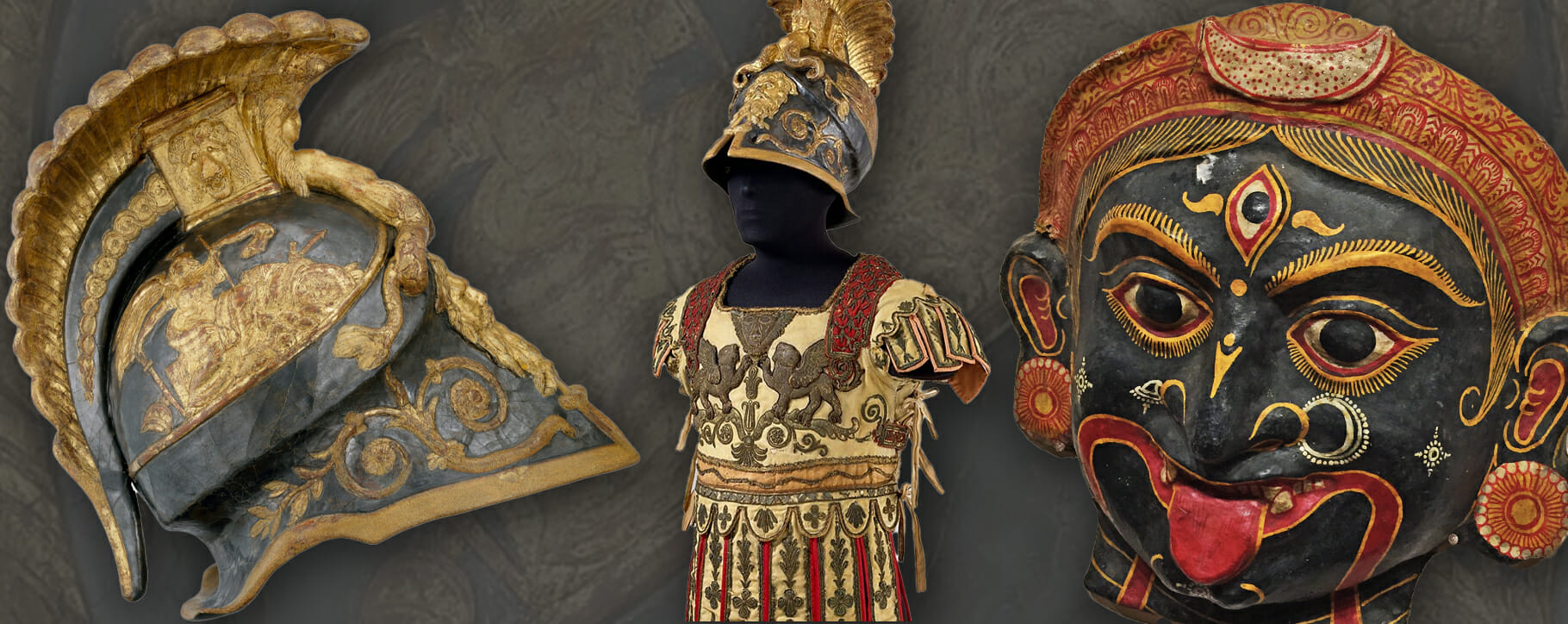 Above: papier-mache classical helmet and costume details from the 18th century and a papier-mache mask from an Indian museum
Above: papier-mache classical helmet and costume details from the 18th century and a papier-mache mask from an Indian museum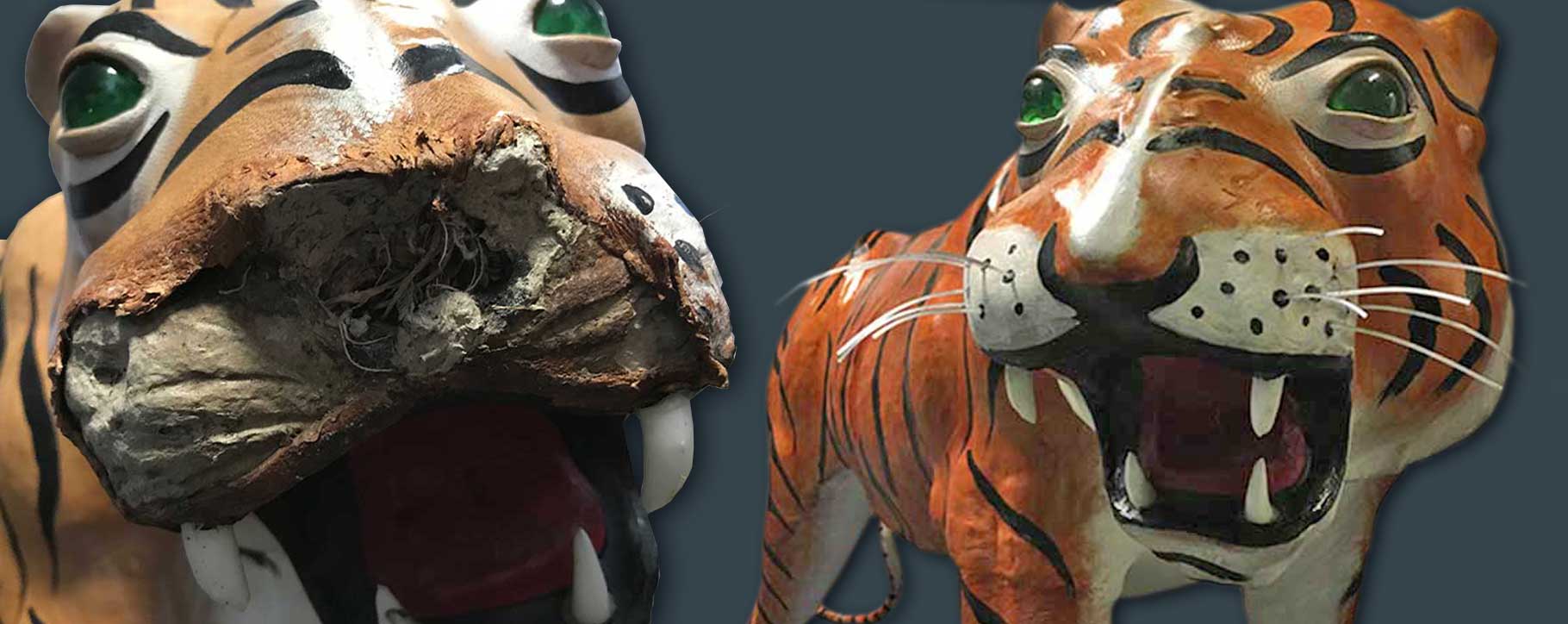 Above: a papier-mache tiger which was restored by our team, pictured before restoration (left) and after restoration (right)
Above: a papier-mache tiger which was restored by our team, pictured before restoration (left) and after restoration (right)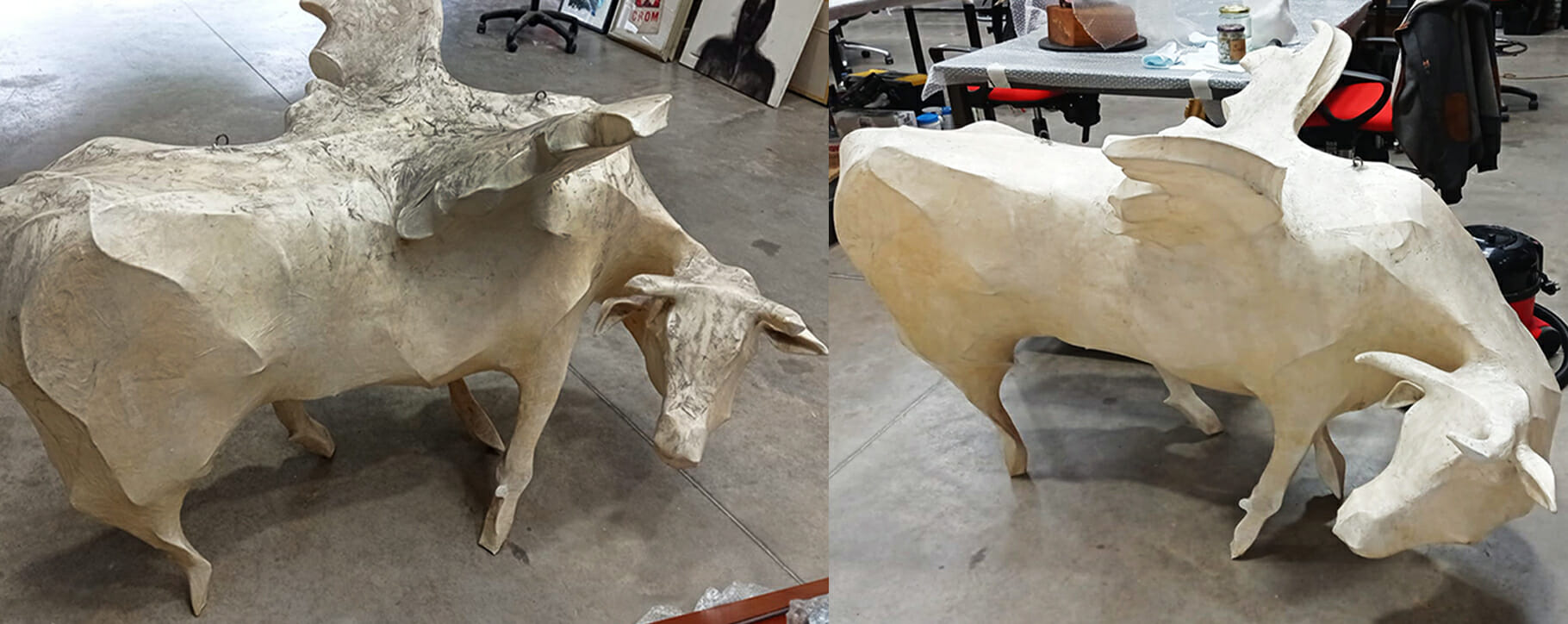 Above: a papier-mache bull which was cleaned and restored by our team, pictured before restoration (left) and after restoration (right)
Above: a papier-mache bull which was cleaned and restored by our team, pictured before restoration (left) and after restoration (right)




